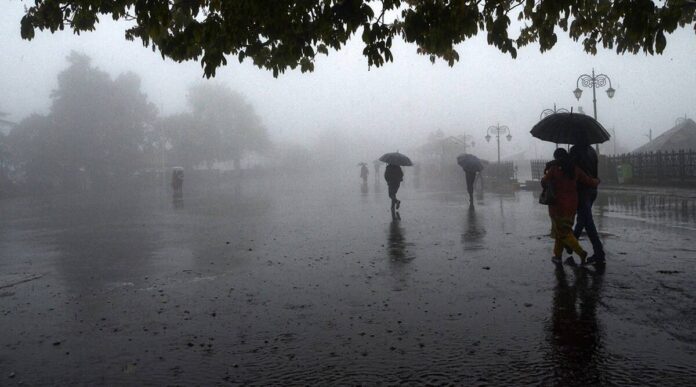As the monsoon season sweeps across the northeastern states of India, Assam, Arunachal Pradesh, Meghalaya, Mizoram, Manipur, Nagaland, and Tripura find themselves in the grip of relentless rain and thunderstorms. The downpour, accompanied by gusty winds and lightning strikes, has wreaked havoc on communities, disrupting daily life, and posing challenges to infrastructure and agriculture. With forecasts predicting continued inclement weather, residents brace themselves for further inundation and the looming specter of floods and landslides.
Assam, the largest state in the region, has borne the brunt of the monsoon onslaught, with incessant rain triggering floods in several districts. Rivers overflow their banks, submerging vast swathes of land, inundating homes, and displacing thousands of people. The state’s capital, Guwahati, grapples with waterlogging and traffic disruptions, as drainage systems struggle to cope with the deluge.
Arunachal Pradesh, nestled in the eastern Himalayas, experiences heavy rainfall and thunderstorms, exacerbating the risk of landslides and flash floods in mountainous terrain. Remote villages are cut off from essential services, while transportation networks face disruptions due to road blockades and landslips. The state’s hilly terrain renders it particularly vulnerable to the ravages of monsoon-induced disasters.
Meghalaya, known for its scenic beauty and abundant rainfall, witnesses torrential downpours that swell rivers and streams, threatening low-lying areas with flooding. The state’s capital, Shillong, grapples with waterlogged streets and disrupted communication links, as residents contend with the challenges of navigating through the rain-soaked landscape.
Mizoram, Manipur, Nagaland, and Tripura also reel under the impact of the monsoon, with sporadic thunderstorms and heavy showers pounding the region. Rural communities bear the brunt of the inclement weather, facing disruptions to agriculture, livelihoods, and essential services. Landslides block crucial arterial roads, hampering relief and rescue efforts in remote areas.
The relentless rainfall not only poses immediate challenges to infrastructure and public safety but also exacerbates long-term concerns related to climate change and environmental degradation. Deforestation, unplanned urbanization, and encroachment on natural waterways exacerbate the impact of monsoon-induced disasters, amplifying the vulnerability of communities in the region.
In response to the monsoon fury, state governments and disaster management authorities are engaged in round-the-clock efforts to mitigate the impact and provide relief to affected communities. Emergency response teams are deployed to evacuate residents from flood-prone areas, while relief camps offer shelter, food, and medical assistance to those displaced by the deluge.
However, the challenges posed by the monsoon extend beyond immediate relief efforts, requiring long-term strategies for disaster preparedness and resilience building. Investments in robust infrastructure, early warning systems, and sustainable land-use practices are essential to mitigate the impact of monsoon-induced disasters and enhance the resilience of communities in the face of climate change.
Furthermore, community participation and awareness play a crucial role in disaster risk reduction, empowering residents to take proactive measures to safeguard their lives and livelihoods. From conserving natural water catchment areas to adopting resilient agricultural practices, communities can contribute to building a more resilient future in the face of monsoon uncertainties.
As the monsoon season progresses, it serves as a stark reminder of the interconnectedness between human activities, climate variability, and the vulnerability of communities in Northeast India. The region’s rich biodiversity and cultural heritage are intrinsically linked to its climatic patterns, making sustainable development and climate resilience imperative for its future well-being.
In the face of adversity, the resilience and solidarity of communities shine through, as people come together to support each other and rebuild in the aftermath of monsoon-induced disasters. It is a testament to the human spirit’s capacity to endure and adapt in the face of nature’s fury, reminding us of the importance of collective action and stewardship in safeguarding our shared future.




